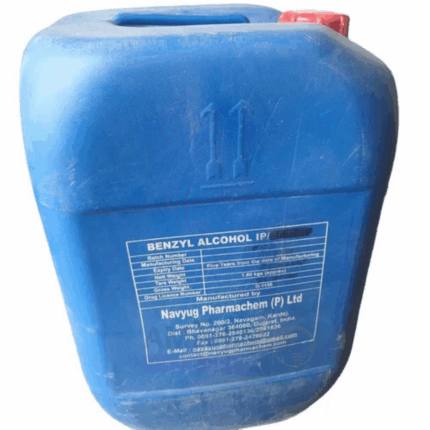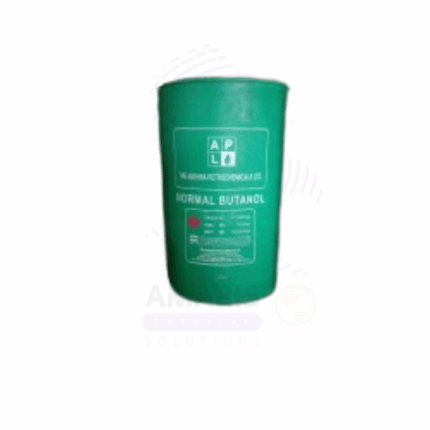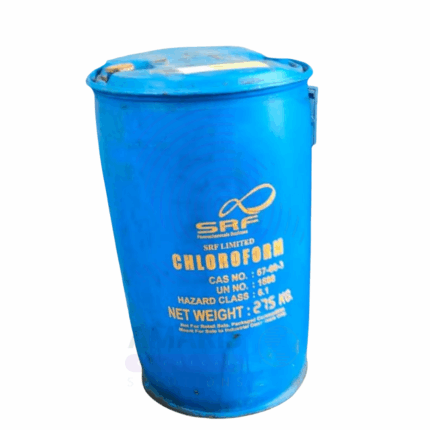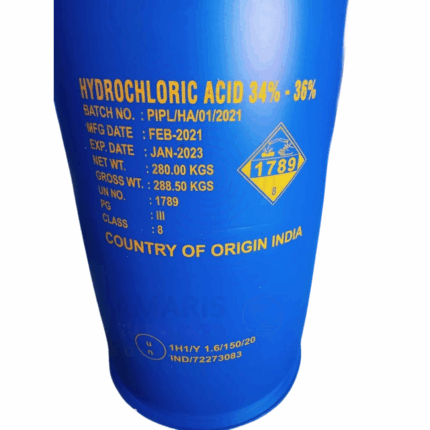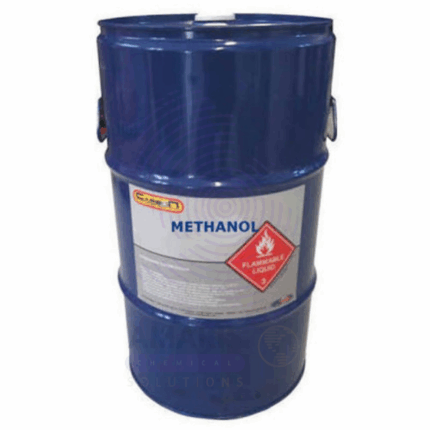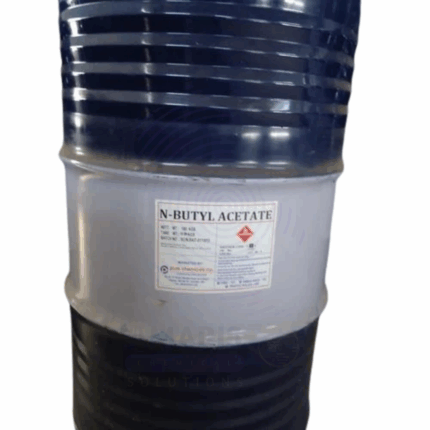“Isopropyl Alcohol Grade Tech” has been added to your cart. View cart
Butyl Glycol
Whatsapp Order
Butyl Glycol, also known as 2-Butoxyethanol, is a colorless to pale yellow liquid with a mild, sweet ether-like odor. It is an organic solvent classified as a glycol ether, with the molecular formula C6H14O2. Butyl Glycol is highly miscible with water, alcohols, and many organic solvents. It is widely used in industrial and commercial applications due to its excellent solvent properties, low volatility, and moderate toxicity. Its high solvency and compatibility with both aqueous and organic phases make it valuable in coatings, cleaning products, inks, and adhesives.
Description
Table of Contents
Toggle
Butyl Glycol
Primary Uses
- Industrial Solvent
- Used as a solvent and coupling agent in paints, coatings, varnishes, and stains to improve flow and leveling.
- Acts as a solvent in printing inks, especially flexographic and gravure inks.
- Cleaning Products
- Commonly found in industrial and household cleaners such as degreasers, glass cleaners, and surface cleaners due to its ability to dissolve oils and greases effectively.
- Chemical Intermediate
- Utilized in the manufacture of glycol ether derivatives and surfactants.
- Adhesives and Sealants
- Employed as a solvent in adhesive formulations for better spreadability and drying performance.
Secondary Uses
- Textile Industry
- Used in textile processing and dyeing as a wetting agent and solvent.
- Agricultural Formulations
- Serves as a solvent and carrier in pesticide and herbicide formulations.
- Personal Care Products
- Occasionally used in cosmetics and personal care items as a solvent and viscosity modifier.
PRODUCT KEY FEATURES
Basic Identification Attributes
- Chemical Name (IUPAC): 2-Butoxyethanol
- Common/Trade Names: Butyl Glycol, Ethylene Glycol Monobutyl Ether, Butoxyethanol
- CAS Number: 111-76-2
- HS Code: 2909.49.00
- Molecular Formula: C6H14O2
- Molecular Weight: 118.18 g/mol
- Synonyms:
- 2-Butoxyethanol
- Ethylene glycol monobutyl ether
- Butyl cellosolve
- Monobutyl ether of ethylene glycol
- EGBE
2. Physical & Chemical Properties
- Physical State: Clear, colorless to pale yellow liquid
- Odor: Mild, ether-like odor
- Boiling Point: 171 °C
- Melting Point: -74 °C
- Density: 0.9 g/cm³ at 20 °C
- Flash Point: 63 °C (closed cup)
- Solubility: Miscible with water, alcohols, and many organic solvents
- Vapor Pressure: 0.4 kPa at 20 °C
- Refractive Index: 1.427–1.429
3. Safety & Hazard Attributes
- Hazard Class (GHS): Flammable Liquid, Category 4; Skin Irritant, Category 2; Eye Irritant, Category 2A
- NFPA Ratings:
- Health: 2
- Flammability: 2
- Reactivity: 0
- Exposure Limits:
- OSHA PEL: 50 ppm (TWA)
- ACGIH TLV: 20 ppm (TWA)
- Toxicity: Moderate toxicity; may cause skin and eye irritation; potential for hemolysis at high exposure levels
- Reactivity: Stable under normal conditions; avoid strong oxidizing agents
4. Storage & Handling Attributes
- Storage Conditions: Store in a cool, well-ventilated area away from heat, sparks, and open flames
- Container Type: Tightly sealed metal or plastic containers resistant to solvents
- Shelf Life: Typically 2–3 years under proper storage
- Special Handling: Use grounding and bonding during transfer; avoid inhalation of vapors and skin contact
5. Regulatory & Compliance Attributes
- Regulatory Status: Listed under REACH, TSCA, and other major inventories
- Transportation: Classified as a combustible liquid under DOT, IMDG, and IATA
- Waste Disposal: Follow local, state, and federal regulations for disposal of chemical solvents
6. Environmental & Health Impact
- Ecotoxicity: Harmful to aquatic organisms; avoid release into the environment
- Persistence: Readily biodegradable under aerobic conditions
- Bioaccumulation: Low potential for bioaccumulation
- Carcinogenicity/Mutagenicity: Not classified as carcinogenic or mutagenic
SAFETY HANDLING PRECAUTIONS
Safety Handling Precautions
Personal Protective Equipment (PPE):
- Chemical-resistant gloves
- Safety goggles or face shield
- Protective clothing
- Respiratory protection if ventilation is insufficient
Handling Measures:
- Avoid inhalation of vapors and prolonged skin contact
- Use in well-ventilated areas
- Prevent static electricity buildup by grounding and bonding containers
Storage Measures:
- Keep containers tightly closed
- Store away from heat, sparks, and incompatible substances
Hygiene Practices:
- Wash hands thoroughly after handling
- Avoid eating, drinking, or smoking in work areas
First Aid Measures
- Inhalation: Move to fresh air; seek medical attention if breathing difficulties persist
- Skin Contact: Wash skin thoroughly with soap and water; seek medical attention if irritation develops
- Eye Contact: Rinse immediately with plenty of water for at least 15 minutes; seek medical advice if irritation continues
- Ingestion: Do not induce vomiting; rinse mouth and seek immediate medical attention
Firefighting Measures
- Fire Hazards: Combustible liquid; vapors may form explosive mixtures with air
- Extinguishing Media: Use foam, dry chemical, CO₂, or water spray
- Special Precautions: Firefighters should wear full protective clothing and self-contained breathing apparatus (SCBA)
- Decomposition Products: Carbon monoxide, carbon dioxide, and other toxic fumes may be produced during combustion
Related products
Benzyl Alcohol
Benzyl Alcohol is an aromatic alcohol with a mild pleasant odor and clear, colorless liquid appearance. It serves as a versatile solvent, preservative, and intermediate in chemical synthesis. Benzyl Alcohol is widely used across pharmaceuticals, cosmetics, paints, coatings, and as a bacteriostatic agent in injectable drugs. Its relatively low toxicity and good solvent properties make it valuable in both industrial and consumer products.
Butanol
Butanol (also known as n-Butanol or Normal Butanol) is a clear, colorless liquid with a mild, alcoholic odor. It is a four-carbon primary alcohol with the chemical formula C4H10O. Butanol is moderately soluble in water and miscible with many organic solvents. Its physical and chemical properties make it a versatile solvent and chemical intermediate. Butanol indicates a high purity grade often used in industrial, pharmaceutical, and chemical synthesis applications.
Chloroform
Chloroform (Trichloromethane) is a clear, colorless, volatile liquid with a sweet, pleasant odor. It is a widely used organic solvent with excellent solvency for many substances. Historically employed as an anesthetic, chloroform is now primarily used in laboratories and industry for extraction, degreasing, and chemical synthesis. It has moderate volatility and is heavier than air, requiring careful handling to avoid inhalation hazards. Its chemical stability and ability to dissolve fats, alkaloids, and other substances make it valuable in pharmaceutical, chemical, and industrial processes.
Ethylene Glycol Monoethyl Ether
Ethylene Glycol Monoethyl Ether, also known as 2-Ethoxyethanol or Ethyl Cellosolve, is a clear, colorless, and hygroscopic liquid with moderate volatility and excellent solvency. It belongs to the glycol ether family and is widely used as a solvent and coalescing agent due to its ability to dissolve both polar and non-polar compounds. It is miscible with water and many organic solvents and has a moderate boiling point (~135°C). It finds extensive applications across coatings, inks, adhesives, cleaners, and chemical synthesis industries.
Hydrochloric Acid HCL 270 kg Drum
Hydrochloric Acid HCL 270 kg Drum is a highly corrosive, strong mineral acid consisting of hydrogen chloride gas dissolved in water to a concentration of approximately 33% by weight. It appears as a clear, colorless to slightly yellow liquid with a sharp, pungent odor. HCl 33% is widely used in industrial, chemical, and laboratory applications due to its strong acidic properties, high reactivity, and versatility. It plays a crucial role in pH control, metal processing, chemical synthesis, and cleaning processes across numerous sectors.
Methanol
Methanol, also known as methyl alcohol or wood alcohol, is a clear, colorless, volatile, and flammable liquid with a distinct alcoholic odor. It is the simplest alcohol and is widely used as an industrial solvent, antifreeze, fuel, and chemical feedstock. Methanol is highly miscible with water and many organic solvents and serves as a precursor to numerous chemicals including formaldehyde, acetic acid, and various plastic
Mono Ethylene Glycol (MEG)
Mono Ethylene Glycol (MEG) is a colorless, odorless, viscous liquid with a sweet taste. It is a widely used organic compound belonging to the glycol family. MEG is primarily utilized as an antifreeze agent and a raw material in the production of polyester fibers and resins. Its excellent solvent properties, low volatility, and high boiling point make it valuable across various industrial applications.
Normal Butyl Acetate
Normal Butyl Acetate (n-Butyl Acetate) is a clear, colorless, flammable liquid with a sweet, fruity odor. It is an ester formed by the reaction of acetic acid and n-butanol. Widely used as a solvent in various industries, it offers excellent solvency for many resins and coatings, making it a preferred choice in paints, adhesives, and inks. Its moderate evaporation rate contributes to good application properties.


 Preservatives(food)
Preservatives(food) Flavor Enhancers
Flavor Enhancers Acidulants
Acidulants Sweeteners
Sweeteners Antioxidants
Antioxidants Colorants(food)
Colorants(food) Nutraceutical Ingredients (food)
Nutraceutical Ingredients (food) Nutrient Supplements
Nutrient Supplements Emulsifiers
Emulsifiers
 Collectors
Collectors Dust Suppressants
Dust Suppressants Explosives and Blasting Agents
Explosives and Blasting Agents Flocculants and Coagulants
Flocculants and Coagulants Frothers
Frothers Leaching Agents
Leaching Agents pH Modifiers
pH Modifiers Precious Metal Extraction Agents
Precious Metal Extraction Agents
 Antioxidants(plastic)
Antioxidants(plastic) Colorants (Pigments, Dyes)
Colorants (Pigments, Dyes) Fillers and Reinforcements
Fillers and Reinforcements Flame Retardants
Flame Retardants Monomers
Monomers Plasticizers
Plasticizers Polymerization Initiators
Polymerization Initiators Stabilizers (UV, Heat)
Stabilizers (UV, Heat)
 Antifoaming Agents
Antifoaming Agents Chelating Agents
Chelating Agents Coagulants and Flocculants
Coagulants and Flocculants Corrosion Inhibitors
Corrosion Inhibitors Disinfectants and Biocides
Disinfectants and Biocides Oxidizing Agents
Oxidizing Agents pH Adjusters
pH Adjusters Scale Inhibitors( water)
Scale Inhibitors( water)
 Antioxidants(cosmetic)
Antioxidants(cosmetic) Emollients
Emollients Fragrances and Essential Oils
Fragrances and Essential Oils Humectants
Humectants Preservatives
Preservatives Surfactants(cosmetic)
Surfactants(cosmetic) Thickeners
Thickeners UV Filters
UV Filters
 Fertilizers
Fertilizers Soil Conditioners
Soil Conditioners Plant Growth Regulators
Plant Growth Regulators Animal Feed Additives
Animal Feed Additives Biostimulants
Biostimulants Pesticides (Herbicides, Insecticides, Fungicides)
Pesticides (Herbicides, Insecticides, Fungicides)
 Active Pharmaceutical Ingredients (APIs)
Active Pharmaceutical Ingredients (APIs) Excipients
Excipients Solvents(pharmaceutical)
Solvents(pharmaceutical) Antibiotics
Antibiotics Antiseptics and Disinfectants
Antiseptics and Disinfectants Vaccine Adjuvants
Vaccine Adjuvants Nutraceutical Ingredients (pharmaceutical)
Nutraceutical Ingredients (pharmaceutical) Analgesics & Antipyretics
Analgesics & Antipyretics
 Analytical Reagents
Analytical Reagents Solvents(lab)
Solvents(lab) Chromatography Chemicals
Chromatography Chemicals Spectroscopy Reagents
Spectroscopy Reagents microbiology-and-cell-culture-reagents
microbiology-and-cell-culture-reagents Molecular Biology Reagents
Molecular Biology Reagents Biochemical Reagents
Biochemical Reagents Inorganic and Organic Standards
Inorganic and Organic Standards Laboratory Safety Chemicals
Laboratory Safety Chemicals Specialty Laboratory Chemicals(Special Laboratory Equipment)
Specialty Laboratory Chemicals(Special Laboratory Equipment)
 Demulsifiers
Demulsifiers Hydraulic Fracturing Fluids
Hydraulic Fracturing Fluids Scale Inhibitors(oil)
Scale Inhibitors(oil) Surfactants(oil)
Surfactants(oil) Drilling Fluids
Drilling Fluids
 Dyes and Pigments
Dyes and Pigments Bleaching Agents
Bleaching Agents Softening Agents
Softening Agents Finishing Agents
Finishing Agents Antistatic Agents
Antistatic Agents
 Admixtures
Admixtures Waterproofing Agents
Waterproofing Agents Sealants and Adhesives
Sealants and Adhesives Curing Compounds
Curing Compounds Concrete Repair Chemicals
Concrete Repair Chemicals Anti-Corrosion Coatings
Anti-Corrosion Coatings
 Surfactants(cleaning)
Surfactants(cleaning) Builders
Builders Enzymes
Enzymes Solvents (Cleaning)
Solvents (Cleaning) Fragrances
Fragrances
 Electronic Chemicals
Electronic Chemicals Catalysts
Catalysts Lubricants
Lubricants Photographic Chemicals
Photographic Chemicals Refrigerants
Refrigerants Automotive chemicals
Automotive chemicals Pyrotechnic Chemicals
Pyrotechnic Chemicals
 Biodegradable Surfactants
Biodegradable Surfactants Bio-based Solvents
Bio-based Solvents Renewable Polymers
Renewable Polymers Carbon Capture Chemicals
Carbon Capture Chemicals Wastewater Treatment Chemicals
Wastewater Treatment Chemicals
 Pigments
Pigments Solvents(paint)
Solvents(paint) Specialty Coatings
Specialty Coatings Binders/Resins
Binders/Resins Additives
Additives Driers
Driers Anti-Corrosion Agents
Anti-Corrosion Agents Functional Coatings
Functional Coatings Application-Specific Coatings
Application-Specific Coatings
 Fresh Herbs
Fresh Herbs Ground Spices
Ground Spices Whole Spices
Whole Spices Spice Blends
Spice Blends Dried Herbs
Dried Herbs
 Leavening Agents
Leavening Agents Dough Conditioners
Dough Conditioners Flour Treatments
Flour Treatments Fat Replacers
Fat Replacers Decoratives
Decoratives Preservatives(baking)
Preservatives(baking)
 Plasticizers & Softeners
Plasticizers & Softeners Reinforcing Agents
Reinforcing Agents Adhesion Promoters
Adhesion Promoters Vulcanizing Agents
Vulcanizing Agents Antidegradants
Antidegradants Blowing Agents
Blowing Agents Fillers & Extenders
Fillers & Extenders Accelerators & Retarders
Accelerators & Retarders





